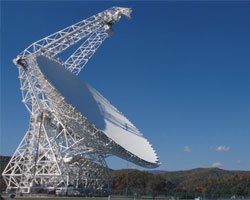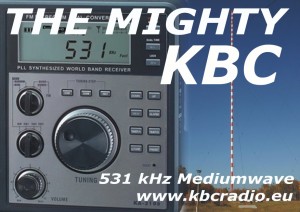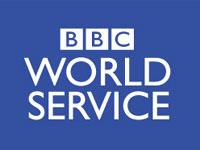Today is the 10th anniversary of the 9/11 terrorist attacks here in the US; also, here in the US, September is National Preparedness Month.
These two facts, coming as they do on the heels of several recent natural disasters in the US (hurricane, flooding, fires, an earthquake) have meant that I’ve received several inquiries about what radios (and supplies) are best for emergency preparedness.
So, I’ve decided to offer a comprehensive guide to preparedness. It includes specific suggestions for radios and other supplies (food, medical, etc.) one should have in stock in case of an emergency.
This is a lot of information, so I have broken it down into two posts:
- Emergency Preparedness Part 1: Choosing the right radios (this post)
- Emergency Preparedness Part 2: All the basics for emergencies
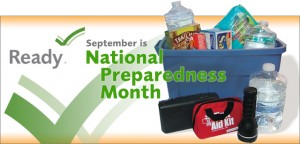 I’m no preparedness expert–and I’m certainly not a devotee of apocalyptic thinking–but in the rural area where I live, in a passive solar home, preparedness is an everyday fact. Power from the grid goes out here frequently, and when it snows, we can be stuck out here for a day or two at least. When weather or other problems occur, as they invariably do, we’re guided by the three emergen-Cs: we simply stay calm, use common sense, and solve any problems creatively. We keep several days of food in stock, have on hand emergency lighting, a generator (which we regularly maintenance), and spare fuel for the generator; meanwhile, my ham radio station can run on a fully-charged battery bank for days. Our refrigerator and freezer are solar-powered with battery back-up as well. When the power goes out, we may notice it, but only just.
I’m no preparedness expert–and I’m certainly not a devotee of apocalyptic thinking–but in the rural area where I live, in a passive solar home, preparedness is an everyday fact. Power from the grid goes out here frequently, and when it snows, we can be stuck out here for a day or two at least. When weather or other problems occur, as they invariably do, we’re guided by the three emergen-Cs: we simply stay calm, use common sense, and solve any problems creatively. We keep several days of food in stock, have on hand emergency lighting, a generator (which we regularly maintenance), and spare fuel for the generator; meanwhile, my ham radio station can run on a fully-charged battery bank for days. Our refrigerator and freezer are solar-powered with battery back-up as well. When the power goes out, we may notice it, but only just.
We also believe in helping the neighbors whenever we can. Oh, and a sense of humor helps keeps things in perspective.
In the wake of natural or man-made disasters, radio is your friend
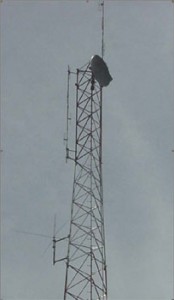
As this thought-provoking video points out, no matter where you live in the world, communication is one of the most important ways you can maintain control when the world around you is out of control.
What type of radio do you need? More than one type, in my view, if you can afford them. At a minimum, you should keep on hand the following:
- One self-powered (hand-crank) radio with AM/FM and emergency flashlight. If you live in the US, this radio should also include the NOAA weather radio frequencies.
- One capable digital portable shortwave radio with SSB (single-side band) mode.
- Several sets of fully-charged rechargeable batteries to power the shortwave radio and other devices like flashlights
- Solar or DC powered battery charger
- Other non-radio supplies (see list at bottom of page)
Review of the best self-powered emergency radios
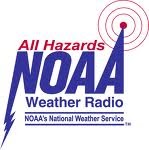 Below, I’ve laid out what I consider to be the best self-powered radios on the market today. Note that many of these radios cannot receive on shortwave, but do receive AM/FM and NOAA frequencies (NOAA weather frequencies are only helpful in the USA, please remember). During natural disasters or in times of emergency, local AM and FM stations tend to be more information-relevant than international broadcasters on shortwave. Of course, I believe you should have a shortwave radio on hand as well, so I have also provided a list of self-powered shortwave radios.
Below, I’ve laid out what I consider to be the best self-powered radios on the market today. Note that many of these radios cannot receive on shortwave, but do receive AM/FM and NOAA frequencies (NOAA weather frequencies are only helpful in the USA, please remember). During natural disasters or in times of emergency, local AM and FM stations tend to be more information-relevant than international broadcasters on shortwave. Of course, I believe you should have a shortwave radio on hand as well, so I have also provided a list of self-powered shortwave radios.
Self-powered AM/FM NOAA weather radios
The Eton FR160 ($30-40 US)
The Eton FR160 is a durable, portable hand-crank and solar powered AM/FM Weather Band radio. It’s quite easy to use and does a fine job tuning in local stations including NOAA weather radio (you can chose from a selection of all seven frequencies). The FR160 has another very useful feature–you can connect any USB-based charger into its built in USB port and use the radio’s hand crank to charge your cell phone or other portable USB device–very cool! Be aware that it takes a lot of cranking to charge a typical cell phone enough for a 5 minute phone call, but in an emergency, it’s worth the trouble. The built-in LED flashlight is also very bright and lasts a long time on 2 minutes of cranking. The solar panel is adequate for charging the radio or for playing it (in full sunlight).
Purchase the FR160 from:
The Eton Scorpion ($50-60 US)
The Eton Scorpion is very similar to the FR160, but has the added features of an auxiliary line-in input, a larger solar panel, and is splash-proof. The Scorpion has an aluminum carabineer to attach it to your belt or pack, a bottle opener, and is overall a very rugged device, so is ideal for camping, too.
Purchase the Scorpion from:
Other self-powered AM/FM/NOAA weather radios worth considering
Eton Corporation also produces the Axis and Rover–I have never used these, but assume they would be worth considering. Eton is certainly the king of self-powered radio technologies and produces many of their radios branded with the Red Cross. They’re sturdy and effective. I know of no self-powered weather band radios as reliable as those produced by Eton.
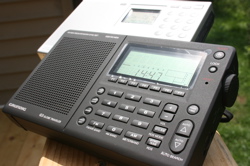
The Grundig G3 or Sony ICF-SW7600GR (in background) are both reliable and have excellent SSB reception.
Shortwave radios
I strongly recommend you have a capable, full-fledged digital shortwave radio tucked away for emergencies. If you already own one, just make sure you always have fresh batteries for it standing by.
What radio, specifically, am I talking about? Basically any radio I have listed on our main reviews page that has SSB capabilities. With SSB, you can tune to the ham radio bands and listen to information which amateur radio operators (both locally, and across the globe) are sharing. If you’re riding out a hurricane (or living in the aftermath of one, such as Hurricane Katrina) SATERN or the Hurricane Watch Net could provide invaluable, immediate and practical information for your situation. You will need SSB to hear them. I actually wrote a tutorial on listening to hurricane watch nets here.
Here are a selection of radios I would recommend:
- The Grundig G3
- The Sony ICG-SW7600GR (also read about it in a review here)
- The Grundig G6
- The Degen DE1103
- The Degen DE1102
Self-powered shortwave radios
While these radios lack SSB and the advanced functionality of the modern digital portable, they can operate with the turn of the crank. This is great, just in case you forget to have a set of fresh batteries among your supplies. All of the radios below have excellent reception characteristics for an analog radio. Why did I only choose analog radios? Mainly because I have yet to find a self-powered digital shortwave radio that has the sensitivity of the analog ones, or the battery longevity. Digital radios look cool and are great for casual use, but I wouldn’t rely on one in an emergency. Stick with these analog units instead:
Tecsun Green 88/Grundig FR200 ($25-35 US)
My all-time favorite self-powered shortwave radio is the Grundig FR200 or Tecsun Green 88. This radio used to be widely available as the Grundig FR200, but Grundig has since stopped producing it. The radio can, however, still be purchased by Tecsun Corporation from vendors in Honk Kong on eBay (link provided below).
What do I love about the Tecsun Green 88? It is:
- durable
- covers the shortwave spectrum down to 3.2 MHz
- sensitive, even just using the built-in telescopic antenna
- has fine-tuning control
- runs for 40 minutes (with fresh NiMH battery pack) off of 2 minutes of hand-cranking
Other notable self-powered shortwave radios
I’m also very fond of several other self-powered shortwave radios, but none of them quite match up to the Tecsun Green 88 (Grundig FR200). I’ve listed a few below that are certainly worth considering.
- Grundig/Eton FR350–This radio even comes with a built-in siren and cell phone charger
- Kaito KA500—We wrote an extensive review of the KA500 here. It’s big on features, but not quite as durable as the two mentioned above
Click here to read Emergency Preparedness Part 2: All the basics for emergencies.

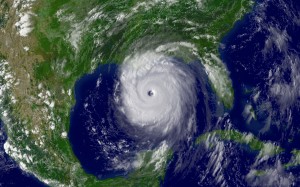
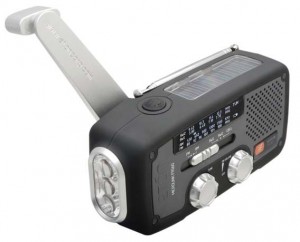
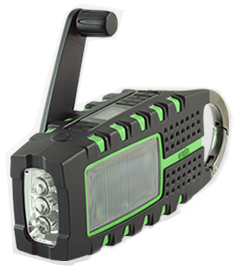
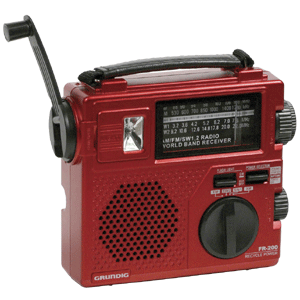
 Great news for kit builders! Legendary company
Great news for kit builders! Legendary company 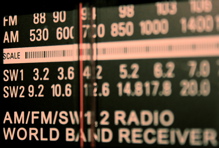 DXing with Cumbre show 703 is now available for download.
DXing with Cumbre show 703 is now available for download.